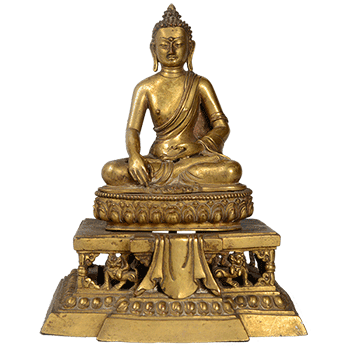This rare sculpture of Shiva Vamana dates back to 5 CE. It belonged to the Vakataka period and originated in Mansar, Nagpur, Maharashtra. It is 85cm in height, 63 cm in width and 38 cm in depth. It is currently on display at the National Museum, New Delhi.

















